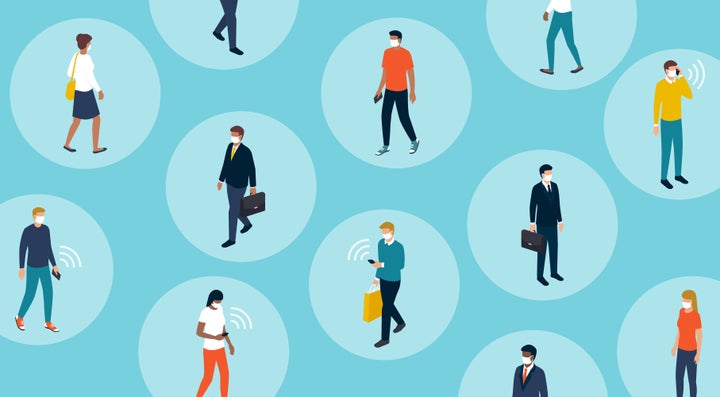“Super-spreader” is a non-scientific term, used to describe people who end up accidentally infecting significantly more people than would be expected – and in this case, we’re talking about people infecting others with COVID-19.
A super-spreader event, then, is the circumstance in which this person spreads the virus around lots of people in one go. While you might expect a person with COVID-19 to pass it on to one or two people, in a super-spreader event they might pass it around to 10 or more.
So far, super-spreader events have occurred in a range of places including meat packing plants, prisons, nightclubs and bars – basically any venue where people are in close proximity of one another, ventilation is poor and the virus gets the opportunity to spread like wildfire.
Scientists want there to be less focus on the people who act as the source of the infection (the super-spreader, you might say) and more on the circumstances the spread has happened – so as not to lay blame. By shifting the focus, they say, this can help prevent situations from happening again.

Household transmission seems to be the most likely way to catch COVID-19, but an analysis by London School of Hygiene and Tropical Medicine (LSHTM) found nursing homes, bars, religious settings and workplaces were associated with more clusters of cases. There have also been some incidences at weddings, sporting events and conferences where large numbers of people became ill.
Quentin Leclerc, a researcher in mathematical modeling of infectious disease, who was involved in the LSHTM analysis, says rather than focusing on the type of venue where the virus spreads (for example, a nightclub or wedding venue), we should focus on the environmental conditions that appear to help fuel such events.
“A lot of people ask: what are the most high-risk settings or how do we rank them?” Leclerc says, “but it doesn’t make a lot of sense to talk about it this way. “What’s interesting is to say this is where we see super-spreading events, these are the characteristics of the settings, [so] these are the factors that facilitate super-spreading events, not the settings.”
Being indoors, having people in close proximity, poor ventilation and environments that are relatively cold (such as food processing plants), seem to facilitate greater transmission of the virus, he points out. This is in comparison to, say, an outdoor venue that’s larger, where people can socially distance.
This explains why choirs – where the close proximity of singers, act of singing, and close contact activities like hugging and kissing – are thought to have fueled transmission, as well as factories and meat processing plants – where crowded and cold conditions are very common. Between four food factories in England and Wales, more than 450 workers tested positive for COVID-19 back in June. One plant was responsible for 200 cases alone.
Another factor to consider is if the people in close proximity of the infected person have weakened immune systems or underlying health issues. If so, they may be more susceptible to the effects of the virus. This might go some way in explaining why the virus has had such devastating effects in care homes.
Rowland Kao, an expert in veterinary epidemiology and data science at the University of Edinburgh in the UK, says many examples of COVID-19 spreading are due to a person having more contact with others than on average.
This might occur, for example, if an infected person repeatedly visits indoor locations with close proximity to others. “This was the driver behind the notorious super-spreading situation in Seoul in May, which resulted in the contact tracing of thousands of individuals and over a hundred cases,” he says.
The event in question took place when a 29-year-old man went to five clubs and bars in Seoul, South Korea. The man later tested positive for COVID-19 and bars and clubs in Seoul were forced to shut. At least 101 cases were linked to the event and more than 7,000 people were tested to stop it spreading further.
Kao points out that 10% of people were thought to be responsible for 80% of new cases at the start of the pandemic. When lockdown happened, this curbed such spread, but with restrictions easing and normality returning somewhat, there are concerns this could, again, drive super-spreading events.
So how can you avoid them? Leclerc says there’s a focus on the three Cs in Japan: avoiding closed spaces with poor ventilation, crowded places with lots of people nearby, and close contact settings such as close-range conversations. This is important to remember for anyone who wants to steer clear of a super-spreading event.
This story originally appeared in HuffPost UK.
Experts are still learning about COVID-19. The information in this story is what was known or available as of publication, but guidance could change as scientists discover more about the virus. Please check the Centers for Disease Control and Prevention for the most updated recommendations.
Credit: Source link